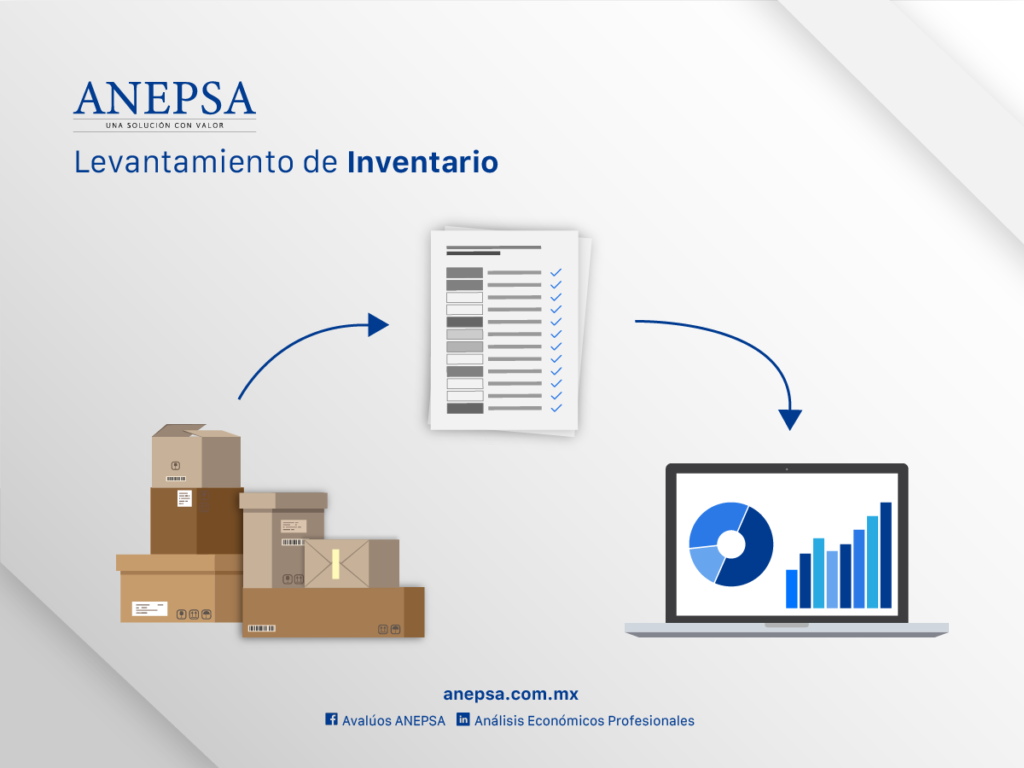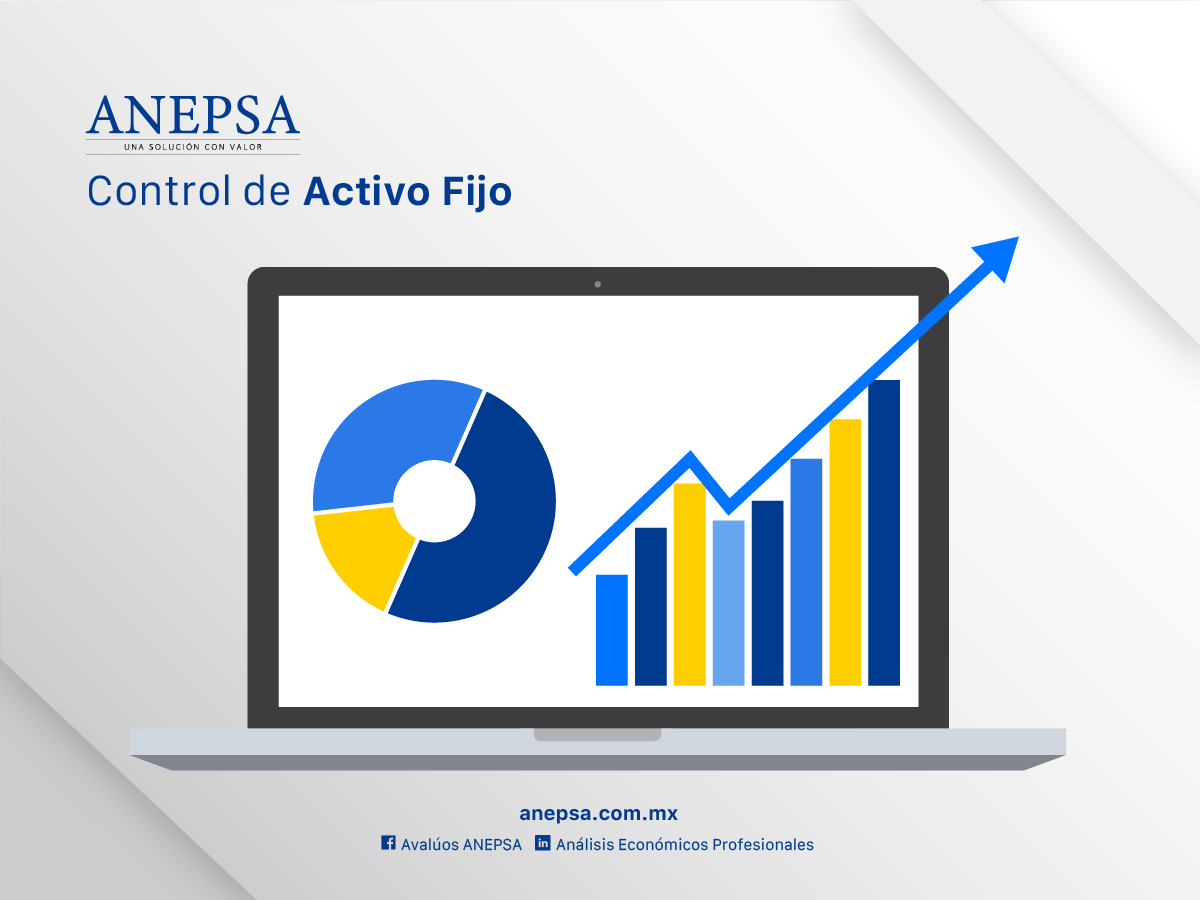Warehouse Inventory Survey
The goal of a warehouse inventory is to improve mutual knowledge and help you learn about each of the services that ANEPSA, carried out with the aim of making an excellent presentation to the client and answering all their questions.

content structure
Definition of an Inventory
Inventory according to Bulletin C-4. – “The item of inventories is made up of the goods of a company destined for sale or production for subsequent sale, such as raw materials, production in process, finished articles and other materials used in the packaging, packaging of merchandise or the spare parts for maintenance that are consumed in the normal cycle of operations.”
Concept: It is the action of counting each one of the existing products or materials in a certain place, where a list with the amount physically found will be delivered.
Current Assets Inventory: It is the quantification of material goods such as: raw material, finished product, tools and spare parts.
Important Inventory Concepts
It is important to know about some keywords to understand when it comes to inventories.
Tag: It is a product identification card that is divided into three sections .
tagging: Action of placing tags in a certain place, according to the code, description and location of the product.
Target of the tag, is a means of control by means of three stubs with which the physical existence of the product to be inventoried is fully identified.
According to the Mexican Institute of Public Accountants and the Generally Accepted Accounting Principles in BULLETIN C-4, below you will find the accounting definitions of the following concepts:
Raw material: Ingredient, substance or object that is needed to make a product.
Production in process: “They are all those products or substances that go through a process for their transformation into a finished product. According to Bulletin C-4, it says that a cut must be made in the operation and therefore it will be evaluated in proportion to the different degrees of progress that the elements that make up its cost have.
Finished Article: "According to bulletin C-4, it includes those articles that will preferably be used for sale within the normal course of operations and the recorded amount will be equivalent to the production cost in the case of industries and the acquisition cost in the case of businesses. Finished items delivered on consignment must be part of the inventory at the corresponding cost, this same operation corresponds to merchandise on display or on view.”
packaging: are those that are used to preserve and transport the merchandise.
Parts and Tools: are those items that are implicit in the product process, which are not raw materials or products in process.
Why Carry Out Warehouse Inventories and for what?
This type of service arose from the need for taxpayers to carry out inventories in accordance with what the law establishes in the Tax record.
ASSET TAX LAW Art. 2nd. Annual Average Inventories.
- The inventories of raw materials, semi-finished or finished products that the taxpayer uses in the business activity and has at the beginning and at the end of the fiscal year, valued according to the method that has been implemented, will be added and the result will be divided by two.
Inventories update: LIAC-3, Para. 4; Presumptive determination for omitting or altering inventories or for not valuing them: CFF-55-III-c, 56, 59, 60; Lien on inventories of foreign residents: LIAC-1-Para. 2, RIAC-25; Inventory of vegetables to manufacture pasta, cookies, oils and soaps: RIAC-12; Proportionalization in irregular financial years: RIAC-25ª
The Current Asset Inventory service can be used for the following products such as:
- Finished product.
- Raw material.
- Production in process.
- Packing material.
During the Current Assets Inventory process, depending on the location or location of the product, it will be necessary to use equipment such as: forklifts, skids and ladders, to carry out labeling and counting.
Requirements that the company that requests the Current Assets Inventory must meet:
- Before visiting the warehouse to see how it is distributed, size and type of material, apply a questionnaire.
- Previous meeting to carry out work plan.
- Detailed location of the warehouse or warehouse.
- Warehouse sketch.
- Name of the person in charge or coordinator on behalf of the client.
- Guide our staff on safety standards and restricted areas.
- Access to our management staff.
- Approved budget.

Purpose of the Warehouse Inventory Service
- Tax regulations indicate that it must be carried out at least once a year.
- Avoid loss or theft.
- Carry out inventory turnover analysis.
- Confirm if there is consistency when carrying out inventories.
- Repercussion of the result of the inventory in the cost of sales.
- Verification of the total amount in books with the physical.
- Compare and Evaluate the work done with your current inventory system
- Develop an adequate procedure on inventories and their rotation.
- Always have the necessary material.
- Control of returns, defective and obsolete material.
- Handling expenses in the warehouse, handling and insurance.
- That the accounting area has the correct data to make its financial statements.
- The result of the inventory to the warehouse is the same as that registered in the books.
Service Benefits
- Take inventory in record time.
- Avoid downtime when using company personnel.
- Avoid false information or manipulation of inventories.
- Greater confidence in results.
- Support company staff for their inventories.
- Don't pay overtime.
- For hiring specialized personnel for inventory.
- Do not distract staff from their daily activities when carrying out inventories.
- Suspension of Activities for the realization of inventories, at the time of fiscal closing.
- Closing of stores due to inventory.
- Immediate availability.
ANEPSA has a team of experts who can help you with this and other types of services. Get to know us by browsing our website and leaving us your information. We are delighted to provide you with quality and the best service.
Some customers of this service









